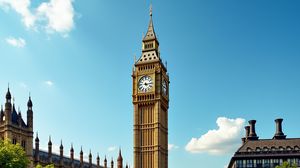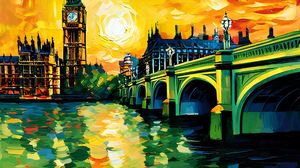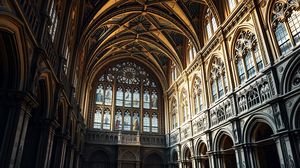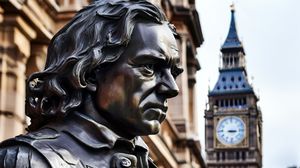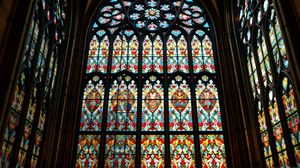
The Boadicea Statue, located at the western end of Westminster Bridge in London, commemorates the legendary warrior queen Boudica (also known as Boadicea), who led a revolt against Roman occupation in Britain. This commanding statue depicts Boadicea in a war chariot with her daughters and is an iconic symbol of British history and resilience.
Commissioned in the 19th century by Prince Albert, the statue was crafted by the artist Thomas Thornycroft. Curiously, despite its commission in 1856, it wasn't actually unveiled until 1902, making its journey to public display over 40 years long.
The statue portrays Boadicea in a dynamic and fierce pose, firmly standing in a chariot drawn by two mighty horses. Her depiction as a powerful woman warrior is a tribute to her status as a national heroine and a symbol of resistance against oppression.
Intriguingly, the statue stands with its back to the Houses of Parliament, pointing towards the City of London. This orientation is said to represent Boadicea's rebellion against authority, with the gaze defiantly facing the financial heart of the country instead.
Although she famously sacked Roman settlements such as Colchester, London, and St Albans, Boadicea's uprising ultimately ended in defeat. Yet, her legacy persists as a potent symbol of the courage and unyielding spirit found in British folklore and history.
The bronze used for the statue is said to have been obtained from melted-down cannons, adding an additional historical layer and emphasizing the transformation from instruments of war to a piece of art celebrating a warrior's legacy.
Standing proudly next to the Thames, the Boadicea Statue is not only a visually striking sculpture but also serves as a portal to Britain's past, allowing visitors to reflect on the enduring tales and truths of the nation's history.

Making the Most of Your Visit:
If you visit the Boadicea Statue, try to go early in the morning or later in the evening. These times are generally less crowded, and you might get some stunning light for photographs with the statue beautifully lit by the rising or setting sun.
For a unique perspective, stand a little further along the bridge to see the whole statue framed against the backdrop of the London Eye and the River Thames. It makes for a spectacular panoramic shot capturing both historical and modern landmarks of London.
Consider bringing a pair of binoculars or a good zoom camera lens. This will allow you to appreciate the intricate details sculpted into the statue, particularly the fierce expressions and flowing details of Boadicea and her daughters.
Take a moment to stand at different angles around the statue to appreciate its different aspects. You'll notice how the statue seems to tell different parts of the story from various viewpoints, including its defiant stance with its back to the Houses of Parliament.
Remember to read up on the historical context of Boadicea's rebellion before you visit. Knowing her story adds a richer layer to your experience as you stand before the statue and reflect on her legacy and symbolism in British history.

Visiting Times & Costs:
The Boadicea Statue, located at the western end of Westminster Bridge in London, is open to the public at all times as it is a public outdoor monument. There is no entrance fee required to view the statue, making it accessible to anyone who wishes to visit.
Since the statue is positioned outside, it is subject to the weather conditions and natural lighting, which can vary throughout the year. Thus, it is available for viewing year-round.
As for accessibility, the area around the statue is generally accessible, though visitors should be aware that the vicinity can sometimes be crowded, especially during peak tourist seasons or events. The pathways near the statue are flat, providing access to those who may have mobility challenges, but visitors should exercise caution due to potential crowding.

Address & Map:

Nearby:
